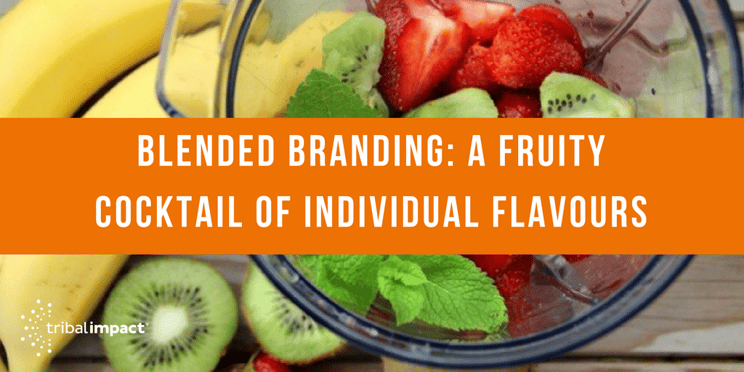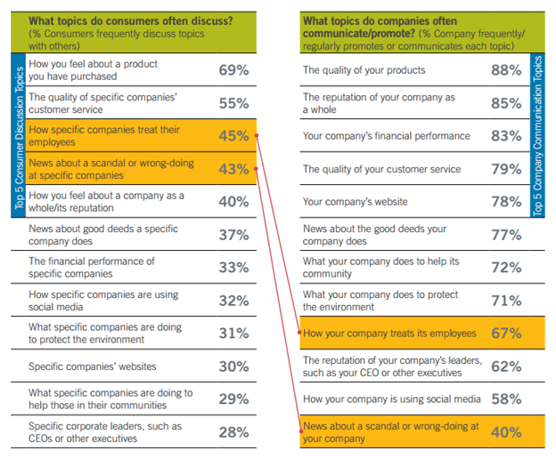
Who doesn’t love a fruit smoothie?
In addition to being utterly amused by Innocent’s commentary on Twitter around the Great British Bake Off hashtag #GBBO (it’s well worth reading – some very witty humour).
I’m a huge fan of their deliciously tasting products. Especially Easy Greens.
What I also love about Innocent is their chatty, informal approach to social media which is totally in line with their product packaging, their website and even their job descriptions (have a read – they’re funny).
Innocent has perfected the blend of their brand – their corporate brand (including their product brands), their employer brand and their employee brand. Possibly a contributing factor as to why they’re the #1 social brand perhaps?
You see, blending a brand isn’t easy. Especially since social media came onto the scene.
On the occasion the corporate brand, the employer brand and employees’ brands are disconnected. It often results in a mixed message to the market. Or - in smoothie terms, a pretty tasteless concoction.
However, when you start with a recipe. A solid foundation of ingredients that you know will spin up a tasty treat. Life gets a lot easier.
Let me explain.
What is Corporate Branding?
For a start, there’s more to corporate branding than a logo. The corporate brand incorporates multiple touch points including the logo, customer service, packaging, advertising, products etc.
Managing the corporate brand is about aligning what you say you do with what you actually deliver. The delta is brand perception. It’s the experience that customers are left with and what they go on to tell others. Good or bad.
With sites like TripAdvisor, Amazon and TrustPilot, brand perception can easily influence others who have yet to experience your brand.
Marketing typically manages the corporate brand and companies invest heavily in driving brand awareness. Whereby they measure in brand impact and in some cases monitoring the brand value on the balance sheet.
What is Employer Branding:
This is all about your reputation as an employer which is closely aligned to the corporate brand.
The idea is that you showcase what it’s like to work at your company. Attracting potential employees but more specifically, attract the kind of employees who will fit well into your organisation.
A recent LinkedIn study recently found that a great employer brand can reduce an organisation’s turnover by 28% and cost-per-hire by 50%.
Employer branding is typically managed by HR using marketing principles. In the same way marketing would look to attract and retain customers, HR will use employer branding to attract and retain talent in the business.
What is Employee Branding?
In contrast, the employee brand focuses on enabling employees to develop and nurture their own professional brand in the context of the employer brand.
This will only work if:
a) Employees understand and genuinely believe the values and mission of the company.
b) They clearly understand how their role contributes to the business – that they have a purpose.
Studies have found employee branding to be the least known of the three but in my view, is fast becoming a major player.
Employees ultimately deliver the customer experience.
Showing that when employees are engaged in their role and believe in their purpose, they’ll deliver beyond customer expectations.
What’s more, enabling employees to build their brand positively impacts employee engagement - they’ll become your biggest brand ambassadors.
According to the Edelman Trust Barometer, an advocacy program gives employees authority, confidence and support to talk about the brand on social media.
This is turn creates trust and respect between brand and employee. Trust in turn creates stronger employee engagement.
Social media has introduced a layer transparency. The kind that has caused businesses to think deeply about customer experience. Additionally, perception is driven not just by promotional activities but how the brand lives throughout the business.
 Showing that branding needs to be authentic than ever before.
Showing that branding needs to be authentic than ever before.
The Weber Shandwick "In Reputation We Trust" study demonstrated this very point.
One of the top 3 talking points amongst consumers is customer service and how specific companies treat their employees.
The employer brand and the corporate brand now need to blend seamlessly.
And on that note, I’m off to get a smoothie.
Happy Monday.
